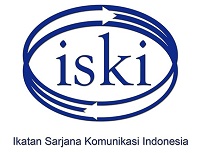Potret Penggunaan Media Televisi pada Kalangan Remaja menuju Dewasa Awal di Yogyakarta
Abstract
Keywords
Full Text:
PDF (Bahasa Indonesia)References
Adorno,T. 1991. How To Look Television, dalam The Culture Industry. London: Routledge.
Alfian. 1988. “The Impact of Television in Indonesia Villages”, Jurnal Penelitian dan Komunikasi Pembangunan, No.21 Th. 1988
Blumler, J. and Katz, E. 1970. The Uses of Mass Communication: Current Perspectives On Gratifications Research. Baverly Hills: Sage Publications.
Chen, M. 1996. Anak-Anak dan Televisi. Jakarta: PT Gramedia Pustaka Utama.
Depari, E. 1996. “Wacana Televisi Indonesia, Perspektif Budaya dan Politik,” Makalah. Tidak Diterbitkan. Yogyakarta: Himpunan Komunikasi Universitas Gajah Mada.
Eron, L. D. 1987. The Development of Aggressive Behaviour from the Perspective of a Developing Behaviorism, American– Psychologist, Vol 35.
Feuerbach, S. 1979. Aggresion. New York: John Willy and Sons.
Hadi, S. 1991. Analisis Butir untuk Instrumen Angket dan Skala Nilai, Yogyakarta: Penerbit Andi Offset.
Lasswell, H. 1972. The Structure and Function of Communication in Society. London: University of Illionis Press.
Malik, D. D. 2001. “Dari Konstruksi ke Konstruksi Refleksi atas Pemberitaan Televisi Kita.” Jurnal Ikatan Sarjana Komunikasi Indonesia, Vol. VI November 2001. Jakarta: ISKI dan Rosdakarya.
McQuail, D. 1980. Toward A Sociology of Mass Communications. Lon don: Collier Macmillan.
________. 1987. Mass Communication Theory, Second Edition. London: Sage Publications.
McQuail, D. dan Windhal, S. 1981. Communications Models for the Study of Mass Communication. Lon don and New York: Longman.
_________. 1993. Communications Models for the Study of Mass Communication. London and New York: Longman.
Parwadi, R. 1999. Hubungan antara Penggunaan Media, Ketergantungan Media dan Agenda Holding. Tesis tidak diterbitkan.
Windahl, Sven. 1981. “Uses and Gratification at The Crossroads”, Mass Communication Review Yearbook, Vol. 3. Beverly Hills: Sage Publications.
DOI: https://doi.org/10.29313/mediator.v6i1.1179
Refbacks
- There are currently no refbacks.

This work is licensed under a Creative Commons Attribution 4.0 International License























